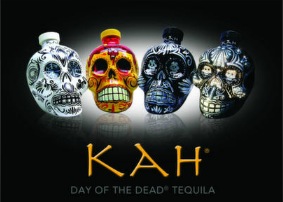
Ninth Circuit recognises protectable trade dress for skull-shaped vodka bottles
Article by: Susan Natland and Brigette Chaput
In Globefill Inc v Elements Spirits Inc (2012 WL 1868861, May 23 2012), the US Court of Appeals for the Ninth Circuit has reversed the US District Court for the Central District of California’s dismissal of an action for trade dress infringement.
Plaintiff-appellant Globefill Inc sells vodka in clear, skull-shaped bottles under the brand name Crystal Head. Globefill’s vodka bottle, shown below, resembles the famous crystal skull archaeology artefacts:

In 2010 Globefill filed suit in the Central District of California, challenging defendant-appellee Elements Spirits Inc’s use of hand-painted skull-shaped bottles in connection with its Kah brand of tequilas and claiming that these bottles infringed Globefill’s common law trade dress rights.

Trade dress or product packaging refers to the distinctive product shape or distinctive packaging for a product. In trade dress infringement cases, like in trademark cases, the trade dress owner must establish ownership of the claimed trade dress and a likelihood of confusion in order to prevail. Trade dress is infringed by the unauthorised use of the trade dress, or of one that is confusingly similar to it, on the same or related goods and services. One of the key differences in asserting a trade dress infringement claim, as compared to a trademark infringement claim, is that where the trade dress is not federally registered, the plaintiff has an additional burden to prove that the trade dress is not functional as part of its prima facie case.
In its complaint, Globefill asserted that it had a protectable trade dress in “a bottle in the shape of a human skull, including the skull itself, eye sockets, cheek bones, a jaw bone, a nose socket and teeth, and including a pour spout on the top thereof”. Globefill claimed that Elements Spirits’ use of skull-shaped tequila bottles constituted unfair competition and false designation of origin, and moved for a preliminary injunction.
However, the US District Court for the Central District of California found that Globefill’s asserted trade dress was functional and overbroad, and granted Elements Spirits’ motion to dismiss Globefill’s complaint for failure to state a claim. Having determined that Globefill had failed to allege a claim for relief under the Lanham Act, the district court denied Globefill's motion for a preliminary injunction.
On appeal, the Ninth Circuit reversed the lower court, finding that the elements asserted as Globefill’s trade dress were part of the “total image, design and appearance” of the product and, therefore, may constitute protectable trade dress.
In contrast to the lower court finding, the Ninth Circuit found that Globefill’s complaint alleged with specificity the elements of the trade dress that it sought to protect and was not overbroad. Next, with respect to its analysis of functionality, the Ninth Circuit considered four factors in determining whether a product feature is functional:
- whether the design yields a utilitarian advantage;
- whether alternative designs are available;
- whether advertising touts the utilitarian advantages of the design; and
- whether the particular design results from a comparatively simple or inexpensive method of manufacture.
The Ninth Circuit stated that, when these factors were properly applied to Globefill’s bottle, the trade dress could not be said to be functional as a matter of law. Specifically, the Ninth Circuit found that:
- Globefill’s skull design was ornamental and served no utilitarian purpose;
- alternative bottle designs were available in abundance; and
- using the skull design increased, rather than decreased, Globefill's manufacturing and shipping costs.
The Ninth Circuit distinguished this case from Rachel v Banana Republic Inc (831 F2d 1503, 1505 (9th Cir 1987)), where the trade dress elements also involved physical features. The Ninth Circuit pointed out that, in Rachel, the physical features served the utilitarian purpose of making the products at issue - lifelike animal reproductions - more realistic.
Accordingly, the Ninth Circuit found that, since Globefill's had a protectable trade dress, its complaint sufficiently stated a claim for unfair competition and false designation of origin under the Lanham Act; the case was remanded to the district court for a decision as to the claim for injunctive relief.
This article first appeared in World Trademark Review Daily, published by The IP Media Group, on June 22nd 2012. To view WTR Daily online, please go to www.worldtrademarkreview.com
